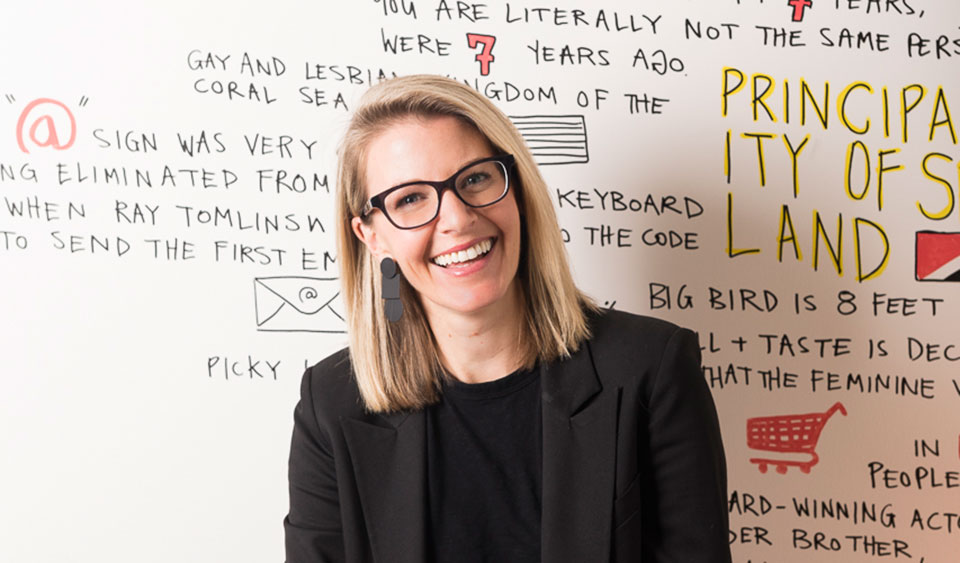If You Have to Say You’re Customer-Centric, Are You Really?

“Customer-centricity” has become one of those buzzwords that appear in company values everywhere, often serving as a nod to being about more than just profit. But too often, it’s treated as a marketing tactic; a way to get customers to spend a little more, buy a little more, consume a little more. It begs the question that if you have to say you’re customer-centric, are you really?
While it’s true that understanding and connecting with your customers can boost marketing impact, real customer-centricity goes beyond marketing ploys. It’s a mindset and philosophy that influences every part of an organisation, placing the customer at the heart of every decision, function, and deliverable. When fully embraced, customer-centricity has the power to transform not just your brand but your entire business, fostering enduring customer relationships. Yes, it does drive profit—research has proven this—but it’s a sustainable, long-term approach rather than a short-term tactic.
Explore these three strategies to instil a company-wide dedication to customer-centricity beyond surface-level marketing efforts:
Make your values count: transform words into impact
I get it; sometimes organisational values can feel like lip-service. But when implemented correctly, they can guide behaviours, decision-making, and mindsets. Take Atlassian, for example. One of their core values is “Don’t #@!% the customer.” In their words, “Customers are our lifeblood. Without happy customers, we’re doomed.” To make sure this mindset is woven into everyday operations, Atlassian conducts “Values Interviews” for all new hires—dedicated interviews that assess how candidates’ mindsets and actions align with company values.
They ask questions like, “Tell me about a time when you had to make a trade-off that could potentially harm a user or customer,” or “Share an instance when you advocated for the customer despite facing opposition.” This rigorous interview process is crucial for hiring decisions and lays the groundwork for a customer-centric culture from day one. No lip-service here.
Make customer-centricity everyone’s job
When we hear “customer-centricity,” it’s easy to think that it only applies to those in customer-facing roles. But your customers encompass more than just your end users; they include any stakeholders you aim to create lasting value for, internal and external. Consider “Who Gives a Crap,” a toilet paper company that allocates 50% of its profits to building sanitation services in developing countries. They extend their customer-centric mindset not just to their end users, but to their employees and contractors too.
They identified that their NDA and consulting agreements were too formal and arduous and didn’t reflect their brand ethos. So, they co-created more employee-friendly versions. “Anything that makes legal documents more accessible for the end user, so they actually understand the agreement they’re entering into, is worth its weight in gold.” Not only did they revamp the documents, but they also improved the entire contracting experience, resulting in quicker turnaround times and a process that better aligns with the Who Gives a Crap brand, proving that even legal documents can be user-friendly!
Eliminate friction at every customer interaction
Customer-centricity goes beyond brand and marketing; it involves every customer experience and touchpoint. Look at Zappos, the online shoe retailer acquired by Amazon in 2012, renowned for its customer-centric culture. In an age where many companies focus on efficiency through AI and chatbots, Zappos differentiates itself with a 24/7 customer service line, allowing customers to speak to a loyalty team member anytime.
These days, finding a customer service phone number on a website can feel like navigating a maze in the dark! Many companies bury their contact details, nudging us toward chatbots and self-help pages instead of real conversations. Zappos embraces personal interaction with customers to ensure they feel heard and understood. Because nobody wants to feel like they’re wrestling with an automated bot when all they really need is a friendly voice.
If you find yourself using ‘customer-centric’ as a marketing buzzword, it’s time for a reality check. True customer-centricity isn’t just a shiny slogan; it’s a fundamental shift in how you operate. Embrace the real potential to build genuine relationships that not only elevate your organisation but also boost your bottom line. Because let’s be honest: if you have to say you’re customer-centric, you probably aren’t.
Written by Zoe Aitken.
Have you read?
Most influential financial centers in the world.
Most Powerful Currencies In The World.
The world’s largest cities by population.
Most Innovative Countries in the World.
Bring the best of the CEOWORLD magazine's global journalism to audiences in the United States and around the world. - Add CEOWORLD magazine to your Google News feed.
Follow CEOWORLD magazine headlines on: Google News, LinkedIn, Twitter, and Facebook.
Copyright 2025 The CEOWORLD magazine. All rights reserved. This material (and any extract from it) must not be copied, redistributed or placed on any website, without CEOWORLD magazine' prior written consent. For media queries, please contact: info@ceoworld.biz








